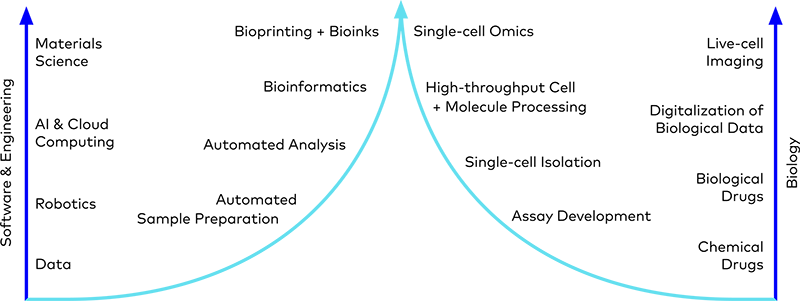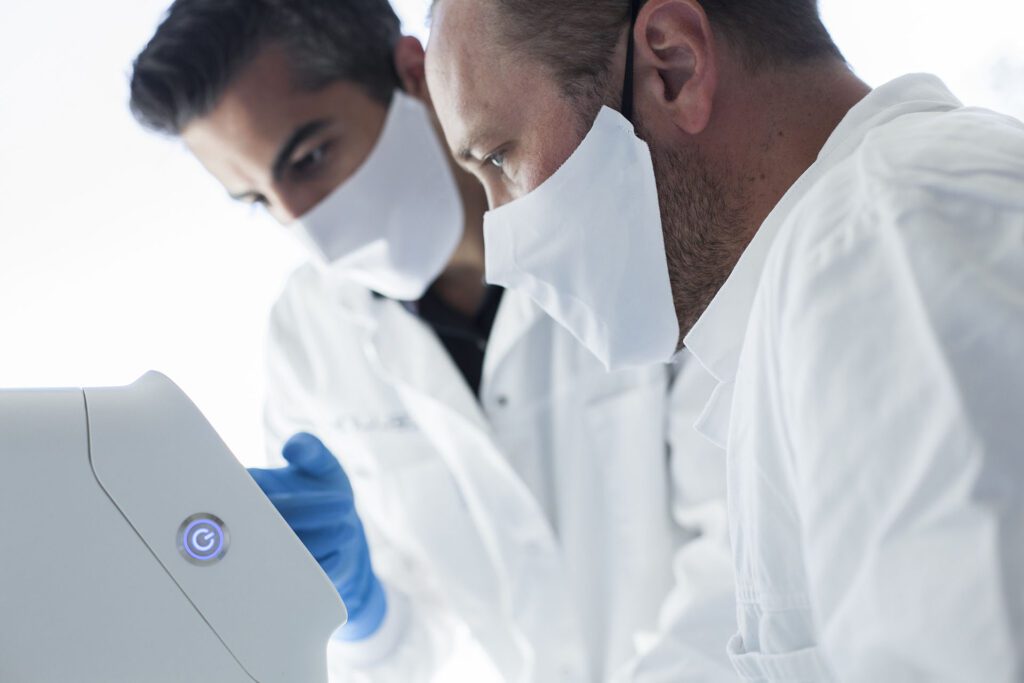Bioconvergence
We live in a post-genomic era, where data, molecular engineering, and new frameworks redefine possibilities. Researchers, engineers, and biotech firms are moving beyond the “nature-inspired” paradigm. The lines between biology, engineering, nanotech, and IT are becoming increasingly blurred. What we’re seeing here isn’t just gradual iteration. It’s a revolution, a mass convergence of multiple different fields: Bioconvergence.

Biology and technology through the history of modern medicine
Through most of the history of modern medicine, technology and biology have had a complex relationship. Early Cartesian practitioners emphasized the similarities between the human body and complex mechanical systems. Other schools of thought adopted more holistic perspectives.
What does this mean for the healthcare industry? Researchers recognized that biology wasn’t just a source of challenges. Wedded to technology, it offered real solutions. Molecular engineers, medical scientists, and biologists came together and a new paradigm was born: Bioconvergence.
What is bioconvergence?
PERSONALIZATION
The new frontier in healthcare
Omics-based profiling helps doctors identify specific mutations and biomarkers in a tumor, letting them narrow down effective treatment options. Miniaturized drug delivery delivers medication to specific cancer-affected areas, without damaging the surrounding tissue. And once the tumor has been successfully removed, bioconvergence makes complete tissue replacement a reality.
Related developments like next-generation DNA sequencing now help to bring down cost and turnaround time on bioconvergence-based treatment approaches. Sequencing helps doctors identify underlying genetic risk factors. It also allows researchers to rapidly identify different types of cancers and pathogens.

Bioconvergence as an industry
Bioconvergence is a major step forward for allied industries like biotech, life sciences, and even robotics. It is transforming the research and development infrastructure that’s responsible for many of this decade’s healthcare innovations.
At an industry level, bioconvergence solves a fundamental problem every biotech firm faces: Bridging the gap between molecular engineering expertise and biology.
This has a real impact on procurement and budget allocation. Engineers who actually operate (and troubleshoot!) laboratory technologies have an entirely different set of expectations and needs compared to research teams. At BICO, we’ve made bioconvergence a priority in order to bridge this gap, enabling flexibility and greater efficiency.

